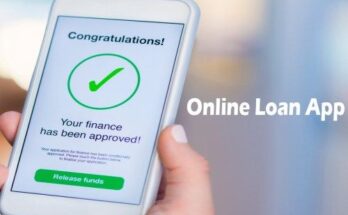Loan Forgiveness Application: In today’s financial landscape, understanding the intricacies of Loan Forgiveness is crucial for those seeking relief from burdensome debts.
This comprehensive guide aims to illuminate the path towards a successful application process, providing in-depth insights and actionable steps.
Eligibility Criteria for Loan Forgiveness
Navigating the intricacies of loan forgiveness can be a daunting task. Understanding who qualifies and under what conditions is crucial for those seeking financial relief. This comprehensive guide outlines the key elements that determine eligibility for loan forgiveness, ensuring you have the information needed to assess your situation effectively.
Who Qualifies for Loan Forgiveness?
Loan forgiveness programs are designed to alleviate the burden of debt for qualified individuals under specific circumstances. Generally, these programs target borrowers who have made a significant effort to meet their repayment obligations and contribute positively to society or their field of work. Common qualifiers include:
- Public Service Professionals: Individuals employed in public service roles often qualify for loan forgiveness. This includes teachers, healthcare workers, and government employees.
- Income-Based Qualification: Some programs offer forgiveness based on the borrower’s income level and family size, aimed at providing relief to those in financial hardship.
- Consistent Repayment History: A history of timely loan repayments is frequently a prerequisite, demonstrating the borrower’s commitment to fulfilling their obligations.
Types of Loans Eligible for Forgiveness
Not all loans are eligible for forgiveness. Typically, federal student loans, such as Direct Loans, are included in forgiveness programs. These include:
- Direct Subsidized Loans
- Direct Unsubsidized Loans
- Direct PLUS Loans for Graduate or Professional Students
- Direct Consolidation Loans
Private loans and some types of federal loans, like the Federal Family Education Loan (FFEL) Program loans, may not qualify for these forgiveness programs.
Employment and Other Conditions
Several loan forgiveness programs are tied to the borrower’s employment or other specific conditions. These may include:
- Employment in a Non-profit or Government Organization: Many forgiveness programs require a certain number of years of service in eligible employment sectors.
- Full-Time Employment: Typically, borrowers must be employed full-time to qualify for forgiveness programs.
- Specialized Programs: Some professions have dedicated forgiveness programs, like the Teacher Loan Forgiveness Program, which requires teaching in a low-income school for a set number of years.
Loan Forgiveness Application Process: A Step-by-Step Guide
This guide provides a comprehensive overview of how to apply for loan forgiveness, what documentation you need, and common pitfalls to avoid.
1. Step-by-Step Guide to Apply for Loan Forgiveness:
Step 1: Determine Eligibility: First, verify if your loan type qualifies for forgiveness. This information is usually available on your loan servicer’s website or through government loan program portals.
Step 2: Complete the Application Form: Download and fill out the loan forgiveness application form from your loan servicer’s website. Ensure all personal and loan details are accurate.
Step 3: Gather Supporting Documents: You may need to submit documentation that proves your eligibility. This could include payment history, employment verification, and income details.
Step 4: Submit Application: Once your application and documents are ready, submit them to the designated authority, either online or by mail, as per instructions.
2. Required Documentation and Where to Obtain It:
- Payment Records: Keep a record of your loan payments. These can be obtained from your loan servicer.
- Employment Verification: If your eligibility is based on your employment, obtain an employment verification letter from your employer.
- Income Documentation: Collect your income statements or tax returns to prove your income level.
- Contact Your Loan Servicer: For specific documentation requirements related to your loan, directly contact your loan servicer.
3. Common Mistakes to Avoid:
- Incomplete Applications: Ensure all fields in the application form are filled out correctly. Incomplete applications are often rejected.
- Incorrect Documentation: Submitting the wrong documents can delay the process. Double-check that you have all the correct paperwork.
- Missing Deadlines: Be aware of the submission deadlines for your loan forgiveness program and submit your application well in advance.
- Not Updating Personal Information: If your contact information changes during the process, update it immediately with your loan servicer to avoid missing important updates.
The loan forgiveness application process requires attention to detail and careful preparation. By following these steps, gathering the correct documentation, and avoiding common mistakes, you can increase your chances of successfully having your loan forgiven. Remember, always reach out to your loan servicer for any clarifications or assistance.
Types of Loan Forgiveness Programs
This guide provides an overview of different loan forgiveness programs, highlighting their unique features and eligibility requirements.
Public Service Loan Forgiveness (PSLF)
The Public Service Loan Forgiveness program is designed for individuals working in public service jobs, either for the government or a non-profit organization. Key points include:
- Eligibility: Requires 120 qualifying monthly payments under a qualifying repayment plan while working full-time for a qualifying employer.
- Loan Types: Only Direct Loans are eligible for PSLF.
- Benefits: After meeting the criteria, the remaining balance on your Direct Loans is forgiven, tax-free.
Teacher Loan Forgiveness
This program specifically aids teachers working in low-income schools or educational service agencies. Its highlights are:
- Eligibility: Must teach full-time for five complete and consecutive academic years in a low-income school or educational service agency.
- Loan Types: Direct Loans and Federal Stafford Loans are eligible.
- Benefits: Forgiveness of up to $17,500 on eligible loans.
Income-Driven Repayment (IDR) Plans
IDR plans are designed to make loan payments more manageable and eventually qualify for loan forgiveness. These plans include:
- Revised Pay As You Earn Repayment Plan (REPAYE)
- Pay As You Earn Repayment Plan (PAYE)
- Income-Based Repayment Plan (IBR)
- Income-Contingent Repayment Plan (ICR)
Each plan has its own criteria and forgiveness terms, generally offering forgiveness on any remaining loan balance after 20-25 years of qualifying payments.
Perkins Loan Cancellation
For those with Federal Perkins Loans, this program offers a unique path to forgiveness:
- Eligibility: Must work in certain public service jobs or teach in a designated low-income school.
- Benefits: Up to 100% forgiveness for five years of eligible service.
Each loan forgiveness program has its specific criteria, benefits, and eligible loans. It’s important to thoroughly research and understand the details of each program to determine the best fit for your circumstances and maximize the potential benefits.
Navigating Challenges in the Loan Forgiveness Application
Applying for loan forgiveness can be a complex process, fraught with various challenges. Understanding these challenges and knowing how to navigate them can significantly ease the application process.
Common Challenges and Solutions
Complex Eligibility Requirements: The criteria for loan forgiveness often involve specific conditions such as employment in a particular sector or a certain number of payments made. To overcome this, thoroughly review the eligibility requirements of your specific loan forgiveness program. This might involve consulting with a financial advisor or the loan servicer.
Documentation and Paperwork: Gathering and submitting the correct documentation is a frequent stumbling block. Make sure you have all the necessary documents, such as proof of income and employment. Keep organized records and consider using a checklist to track your paperwork.
Understanding the Terms and Conditions: Loan forgiveness programs come with their own set of rules. Misunderstanding these can lead to rejected applications. Carefully read the terms and conditions, and don’t hesitate to seek clarification from the loan servicer or a financial expert.
Timing and Deadlines: Missing deadlines can delay or disqualify your application. Keep track of all important dates and set reminders well in advance to ensure timely submission.
Tips for Expediting the Application Process
Stay Informed: Keep up-to-date with any changes in the loan forgiveness policies. Government websites and official channels are reliable sources for the latest information.
Organize Your Documents: Have all your documents in order before you start the application process. This reduces the chance of delays due to missing or incorrect paperwork.
Seek Professional Help: Don’t hesitate to consult with financial advisors or loan counselors. Their expertise can help streamline the process and avoid common pitfalls.
Use Online Resources: Many loan servicers offer online portals for easier application submission and tracking. Utilize these tools to save time and keep a digital record of your application.
Follow Up Regularly: After submitting your application, regularly check its status. Promptly respond to any requests for additional information or clarification.
By being prepared and informed, you can navigate the challenges of the loan forgiveness application process more effectively, bringing you closer to achieving your financial goals.
Resources and Assistance for Applicants
To ease this journey, a comprehensive list of resources and assistance options is essential. This section aims to provide applicants with valuable information and guidance, ensuring a smoother and more informed application experience.
Key Resources for Application Assistance
Guidance Websites: There are numerous websites dedicated to offering step-by-step guidance for various application processes. These websites often include FAQs, expert advice, and user-friendly interfaces to help applicants understand the requirements and procedures.
Online Forums and Communities: Engaging with online communities can be incredibly beneficial. These platforms allow applicants to share experiences, ask questions, and receive advice from those who have successfully navigated the process.
Instructional Videos and Webinars: Many organizations offer free webinars and instructional videos. These visual aids can provide a more interactive approach to understanding the application process.
Help Desks and Support Lines: Most institutions have dedicated help desks or support lines. Applicants can directly contact these for personalized assistance or clarification on specific aspects of their application.
Legal and Financial Advice for Applicants
Legal Consultation Services: Understanding the legal intricacies of applications, especially those involving contracts or international elements, is crucial. Free or low-cost legal consultation services can be sought for this purpose.
Financial Advisory Services: Many applicants may require advice on the financial aspects of their applications, such as fees, funding, and scholarships. Financial advisors and counselors can provide valuable insights and strategies for managing these financial elements.
Workshops and Seminars: Regularly scheduled workshops and seminars can offer detailed insights into both the legal and financial aspects of the application process. These are often conducted by experts in the field and can be invaluable resources.
Online Resource Centers: Websites specifically dedicated to legal and financial advice for applicants can be a treasure trove of information. They often contain articles, guides, and tools to assist in the financial planning and legal understanding necessary for applications.
However, a variety of resources are available to assist applicants in both the general application process and the specific legal and financial challenges they may encounter. Utilizing these resources can greatly enhance an applicant’s ability to successfully navigate the complexities of their application journey.
Updates and Changes in Loan Forgiveness Policies
Staying informed about the latest developments in loan forgiveness policies is crucial for both new and existing applicants. This section is dedicated to providing the most current news and updates on loan forgiveness, ensuring you have the information needed to make informed decisions.
Keeping Up with Policy Changes
Loan forgiveness programs are often subject to changes and updates, which can significantly impact eligibility and benefits. We regularly update this section to bring you the latest information, ensuring you’re always aware of the most recent policy shifts.
Impact on Applicants
Understanding how these changes affect you is vital. Whether you’re considering applying for loan forgiveness or are already part of a program, it’s essential to know how new policies might alter your situation. We delve into the specifics of these changes, highlighting what’s new and what it means for both prospective and current participants in loan forgiveness programs.
Stay informed and ahead of the curve with our comprehensive coverage of loan forgiveness policy updates and changes.
FAQs: Loan Forgiveness Applications
1. What is Loan Forgiveness?
Loan forgiveness is a process where the lender allows the borrower to be exempt from paying back part or all of the loan under specific circumstances.
2. Who Qualifies for Loan Forgiveness?
Eligibility varies by loan type. Generally, it’s available to those in public service jobs, teachers, or borrowers under income-driven repayment plans.
3. How Do I Apply for Loan Forgiveness?
Application processes differ. It typically involves completing a form provided by your loan servicer and providing requisite documentation.
4. What Documents are Needed for the Application?
Required documents often include proof of employment, income verification, and loan repayment history.
5. How Long Does the Loan Forgiveness Process Take?
The timeline varies but expect several months for processing. Continuously check with your loan servicer for updates.
6. Can Private Loans be Forgiven?
Generally, private loans are not eligible for forgiveness programs. Check with your private lender for potential exceptions.
7. Is Forgiven Debt Taxable?
This depends on the type of forgiveness and current tax laws. Consult a tax professional for advice.
8. What Happens if My Application is Denied?
You’ll continue to owe your loan as per your original agreement. You can consult your loan servicer for alternative options.
9. Can I Reapply for Loan Forgiveness?
Yes, under certain circumstances, you can reapply. Check the specific requirements of your loan forgiveness program.
10. Where Can I Get Help With My Application?
Many loan servicers offer guidance. You can also seek help from a financial advisor or legal aid services.
Conclusion
In summary, navigating the Loan Forgiveness Application can be a crucial step towards financial relief and stability. This process, while potentially complex, offers a valuable opportunity for eligible individuals to lessen their financial burdens. We’ve walked through the essential elements of the application, aiming to provide clarity and guidance.
It’s important to remember that this journey doesn’t have to be undertaken alone. If you find yourself uncertain or overwhelmed, don’t hesitate to reach out for assistance. Financial advisors, loan experts, and specific program helplines are there to help you understand the intricacies of your application and ensure you meet all necessary criteria.
Taking the initiative to apply for loan forgiveness is a proactive step towards a more secure financial future. We encourage you to review the details, gather your documents, and take that important first step. Remember, support is always available to guide you through this process. Don’t let uncertainty hold you back from exploring this opportunity to alleviate your financial obligations.


